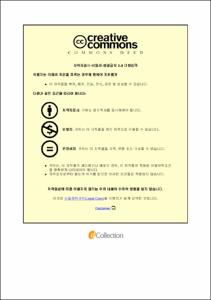이산화염소(ClO2)의 급성 생물 독성 및 먹이생물 배양수 살균 효율 평가
- Alternative Title
- Acute Toxicity of Chlorine Dioxide (ClO2) and Its Disinfection Efficiency to Live Feed Culture
- Abstract
- Currently chlorine dioxide (ClO2) is considered a promising disinfection material for aquaculture uses due to its high solubility and strong oxidative power. This material is, however, easily degradable with the sunlight and not hydrolyzed, barely leaving secondary residual materials in the water. Thus, it is instantly volatile after disinfecting pathogens and likely minimizes the risk to aquatic organisms. Only a few studies on chlorine dioxide were carried out in the field of aquaculture.
This study was designed to find fundamental information on chlorine dioxide to use it practically in the aquaculture field. This study consists of two parts as follows; 1) Experiment 1 - Acute toxicity tests of chlorine dioxide on two different fingerlings of seawater fishes (black seabream, Acanthopagrus schlegelii and red seabream, Pagurs major) and four different types of live feeds (Isocrysis galbana, Nannochloropsis sp, Brachionus plicatilis, and Artemia salina), 2) Experiment 2 - Disinfection efficiency of chlorine dioxide in the culture media for four different types of live feeds (Isocrysis galbana, Nannochloropsis sp, Brachionus rotendiformis, and Artemia salina). In Experiment 1, median lethal concentrations for 96 h (96LC50) were found at 0.14 and 0.24 mg ClO2/L for black seabream and red seabream, respectively. Based on the specific growth rates of I. galbana and Nonochloropis sp., no observed adverse effect levels (NOAEL) were the same with 0.05 mg ClO2/L, while median effective concentrations (EC50) for those microalgae were estimated as 0.535 and 0.648 mg ClO2/L. Rotifer (Brachionus plicatilis) showed the same NOAEL as both microalgae, while its 24LC50 was 0.641 mg ClO2/L similar to the level in Nonochloropis sp. For artemia (Artemia salina), 24LC50 and NOAEL were found 5.99 and 2.00 mg ClO2/L, showing the relatively higher tolerance to chlorine dioxide compared to the other organisms tested. In Experiment 2, the regrowth rate of Nonochloropis sp was inhibited by 83% compared to control with the treatment concentration of 4 mg ClO2/L under the concentrations of 0.94 mg TSS/L and 2.67 mg COD/L (P>0.05). Its regrowth rate decreased with increasing treatment concentration, showing a 67% reduction to control at 16 mg ClO2/L, while bacterial growth was inhibited by 98.4%. No inhibition in regrowth of Nonochloropis sp. was observed with 2 mg ClO2/L, but only a 60% reduction in bacterial growth was found. In the contrast, the regrowth rate of I. galbana under the concentrations of 1.28 mg TSS/L and 2.67 mg COD/L was not inhibited and bacterial growth was successfully inhibited by 95.4% at 8 mg ClO2/L compared to control. For rotifer (Brachionus rotendiformis), no mortality was observed and bacterial growth was successfully inhibited by 97.7% at 16 mg ClO2/L under the concentrations of 1.62 mg TSS/L and 2.67 mg COD/L. Based on the TSS concentration, the regressions of bacterial inhibition rate for MIC90 and MIC99 were estimated as follows: Y=7.4481X + 0.8416 (R2=0.9901), Y=10.823X + 1.8756 (R2=0.9512). respectively (Y: bacterial inhibition rate, X: TSS concentration). Artemia (Artemia salina) at the culture intensity of 1,000 individuals/mL survived 100% and bacteria were entirely removed at the chlorine dioxide concentration of 50 mg ClO2/L. Chlorine dioxide appears to effectively disinfect for live feeds and be promising in aquaculture uses. However, an effective concentration of chlorine dioxide for disinfecting live feeds should be carefully determined, considering that different effects can be manifested according to various factors such as culture intensity of live feeds and demands in culture media.
- Issued Date
- 2020
- Awarded Date
- 2020. 8
- Type
- Dissertation
- Publisher
- 부경대학교
- Alternative Author(s)
- Ock Lee
- Affiliation
- 부경대학교 대학원
- Department
- 대학원 수산생물학과
- Advisor
- 박정환
- Table Of Contents
- 1. 총 서론 1
2. 이산화염소의 급성 생물 독성 5
2.1. 서론 5
2.2. 재료 및 방법 7
2.2.1. 감성돔 및 참돔 치어에 대한 이산화염소의 급성 독성 7
2.2.1.1. 실험 시스템의 구성 및 이산화염소 주입 7
2.2.1.2. 실험어류 및 조건 8
2.2.1.3. 치사농도(LC)의 계산 및 분석 방법 8
2.2.2. 미세조류(Microalgae)에 대한 이산화염소의 성장저해 독성 10
2.2.2.1. 실험 생물 10
2.2.2.2 실험 방법 10
2.2.3. 로티퍼(Brachionus plicatilis )에 대한 이산화염소의 급성 독성 16
2.2.3.1. 실험 생물 16
2.2.3.2. 실험 방법 16
2.2.4. 알테미아(Artemia salina )에 대한 이산화염소의 급성 독성 19
2.2.4.1. 실험 생물 19
2.2.4.2. 실험 방법 19
2.3. 결과 22
2.3.1. 감성돔 및 참돔 치어에 대한 이산화염소의 급성 독성 22
2.3.1.1. 감성돔 치어와 참돔 치어의 생존율 22
2.3.1.2. 감성돔 치어와 참돔 치어의 치사농도(LC50) 25
2.3.2. 미세조류(Microalgae)에 대한 이산화염소의 성장저해 독성 30
2.3.3. 로티퍼(Brachionus plicatilis )에 대한 이산화염소의 급성 독성 36
2.3.4. 알테미아(Artemia salina )에 대한 이산화염소의 급성 독성 40
2.4. 고찰 44
2.4.1. 감성돔 및 참돔 치어에 대한 이산화염소의 급성 독성 44
2.4.2. 먹이생물에 대한 이산화염소의 급성 독성 48
3. 먹이생물 배양액에 대한 이산화염소의 살균효율 50
3.1. 서론 50
3.2. 재료 및 방법 53
3.2.1. 미세조류 배양액에 대한 이산화염소의 살균효율 53
3.2.1.1. 실험 생물 53
3.2.1.2. 실험 방법 53
3.2.2. 로티퍼 배양액에 대한 이산화염소의 살균효율 55
3.2.2.1. 이산화염소 농도에 따른 살균효율 55
3.2.2.2. 로티퍼 배양 밀도에 따른 이산화염소의 살균효율 56
3.2.2.3. 이산화염소 처리시간에 따른 살균효율 60
3.2.3. 알테미아의 배양액에 대한 이산화염소의 살균효율 62
3.2.3.1. 시험 생물 62
3.2.3.2. 시험 방법 62
3.3. 결과 64
3.3.1. 미세조류 배양액에 대한 이산화염소의 살균효율 64
3.3.1.1. 미세조류 재성장 64
3.3.1.2. 세균 제어 70
3.3.2. 로티퍼 배양액에 대한 이산화염소의 살균효율 74
3.3.2.1. 이산화염소 농도에 따른 살균효율 74
3.3.2.2. 로티퍼 배양 밀도에 따른 이산화염소의 살균효율 79
3.3.2.3. 이산화염소 처리시간에 따른 살균효율 84
3.3.3. 알테미아의 배양액에 대한 이산화염소의 살균효율 86
3.4. 고찰 89
4.요약 91
5.감사의 글 94
6.참고문헌 96
- Degree
- Doctor
- Files in This Item:
-
-
Download
 이산화염소(ClO2)의 급성 생물 독성 및 먹이생물 배양수 살균 효율 평가.pdf
기타 데이터 / 2.21 MB / Adobe PDF
이산화염소(ClO2)의 급성 생물 독성 및 먹이생물 배양수 살균 효율 평가.pdf
기타 데이터 / 2.21 MB / Adobe PDF
-
Items in Repository are protected by copyright, with all rights reserved, unless otherwise indicated.